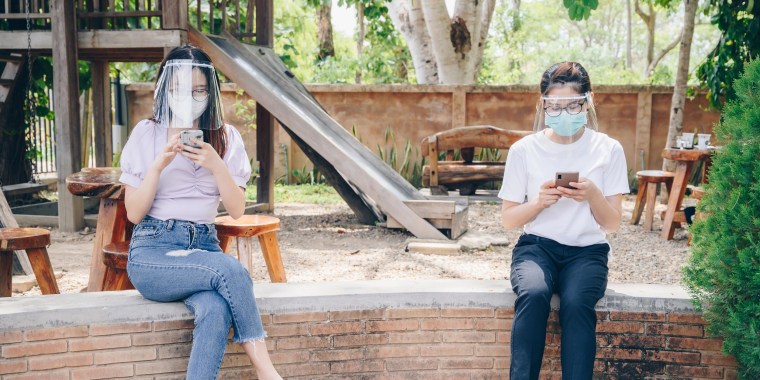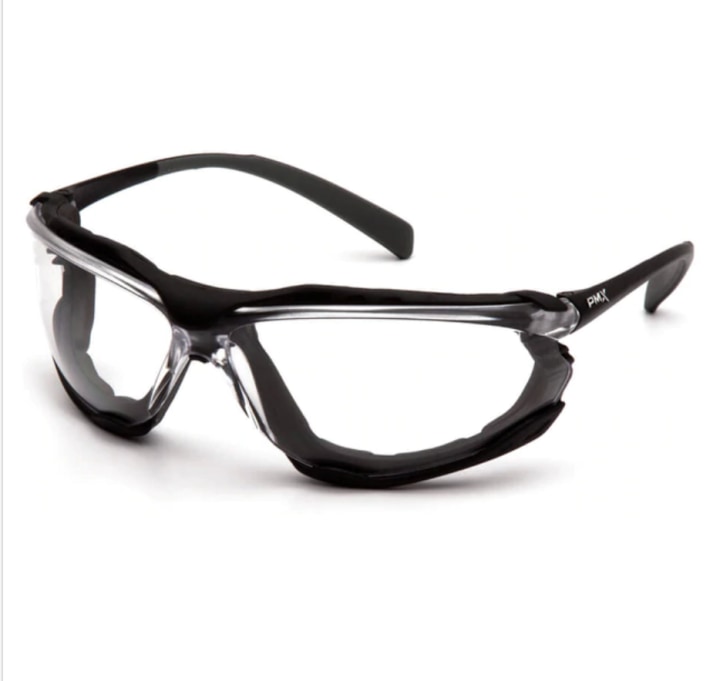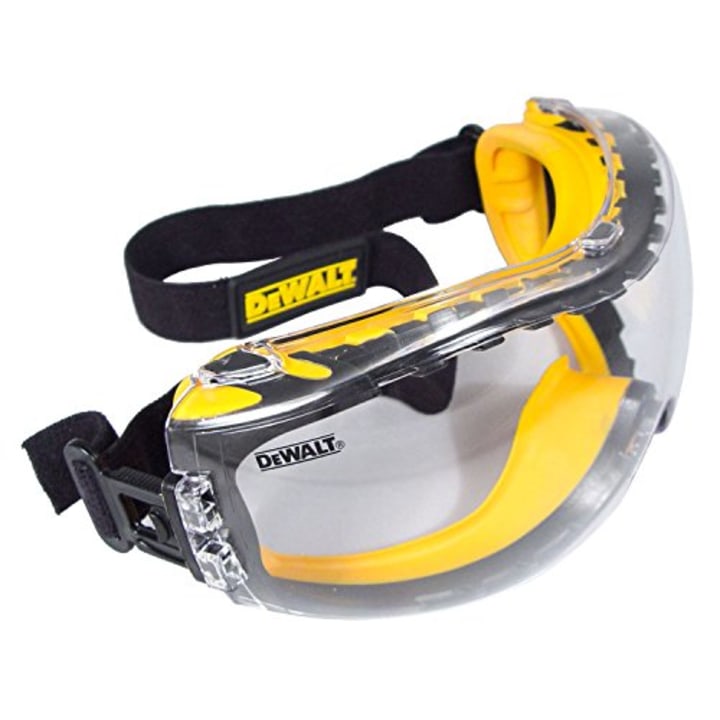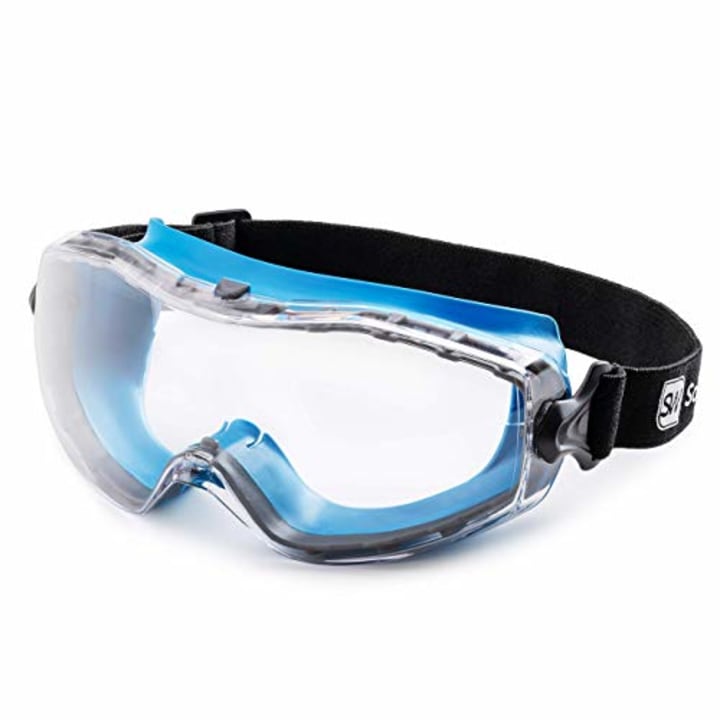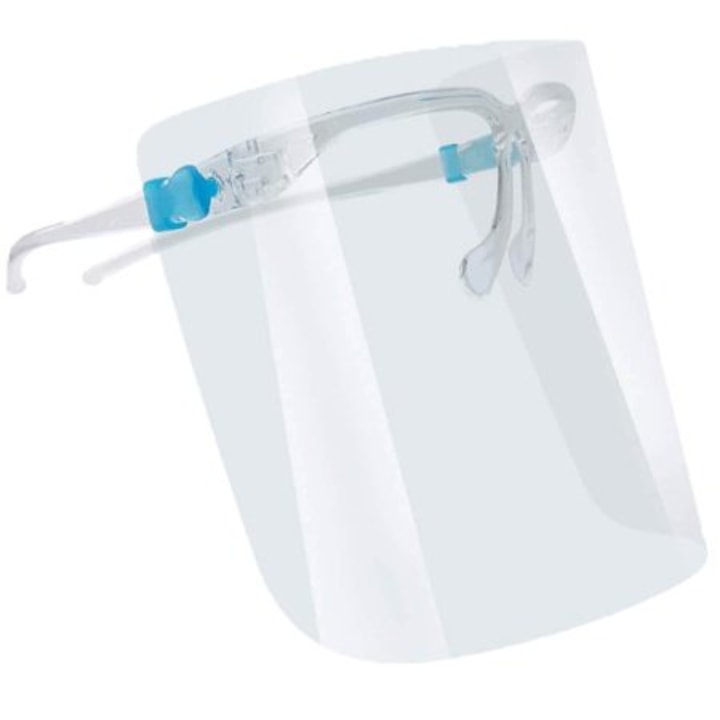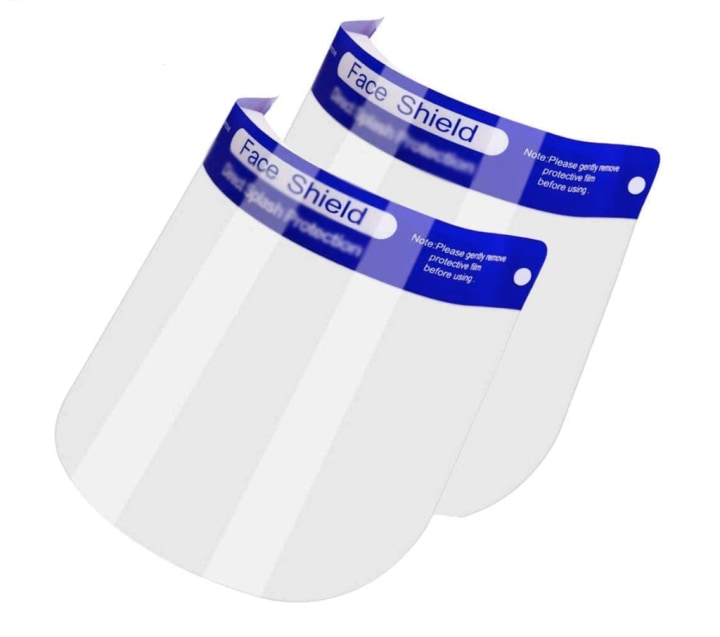Beyond wearing masks, washing our hands, practicing physical distancing and getting vaccinated, there’s an additional layer of protection against the coronavirus that we might want to consider: eye protection. While rare, Yuna Rapoport, MD, founder and director of Manhattan Eye, said our eyes are an entry point for viral particles and can be a channel through which we become infected with Covid-19. But does that mean we should wear eye protection to school, work and the grocery store?
“I don’t think we need to routinely wear glasses, goggles or face shields like we need to wear masks,” said Rapoport. “But then again, it doesn't hurt to wear protective eyewear, either.”
Thomas Steinemann, MD, spokesperson for the American Academy of Ophthalmology and professor of ophthalmology at MetroHealth Medical Center, said there have been a few studies about wearing eye protection as a Covid-19 mitigation measure. One of the most prominent ones is a study published in the medical journal JAMA Ophthalmology in September 2020. It examined whether or not there’s an association between people wearing eyeglasses daily and their susceptibility to the coronavirus. The study, which examined 276 individuals hospitalized with Covid-19 in Suizhou, China, found that the proportion of daily eyeglass wearers — those who wore eyeglasses for more than eight hours a day — was just 5.8 percent, while the number of local individuals who wore eyeglasses daily was 31.5 percent. Steinemann said the study suggests that daily wearers of eyeglasses may be less susceptible to Covid-19. But he thinks more studies need to be done around the topic in order to make public health recommendations.
“I think the study is fascinating and it’s compelling for more studies, but it’s just one small observational study,” Steinemann said. “I don’t want people to lose sleep over it.”
The Centers for Disease Control and Prevention (CDC) currently only recommends eye protection for healthcare professionals in “areas with moderate to substantial community transmission” As for the rest of us, Rapoport and Steinemann said recommendations for wearing eye protection are situational. We talked to medical experts about when we may want to wear eye protection during the pandemic, and the types of eye protection we may want to consider.
Types of eye protection
The CDC states that it “does not recommend face shields or goggles as a substitute for masks,” but it notes that goggles or other eye protection may be used in addition to a mask. Face shields and goggles are primarily used to protect the eyes of the person wearing them, the CDC says.
Steinemann said the three types of eyewear he recommends are goggles, safety glasses and face shields. Overall, he noted that you should look for eyewear that creates a seal around the eyes in order to eliminate gaps where particles could get in.
Rapoport said goggles are very protective, and when she saw Covid-19 patients in the hospital early on in the pandemic, she wore a pair. If you look at pictures of people who are on the frontlines, she said they often wear goggles in addition to masks, gowns, gloves and other personal protective equipment.
Safety glasses are another, more inconspicuous option, especially if you plan to wear them to run errands in crowded public spaces or travel on public transportation. The safety glasses should have barriers on the tops and sides, and look for glasses that have a seal (usually made from foam or rubber) around the inside of the frames.
Face shields are another option, which, as we previously reported, can block large particulates from getting into your eyes and mouth. On top of its caution against replacing masks with face shields, the CDC notes that “face shields have large gaps below and alongside the face where respiratory droplets may escape and reach others around you.”
Best eye protection to wear during the pandemic
1. Hair Villa Safety Glasses
These safety glasses are designed with side and top shields to protect your eyes from airborne particles. They’re made from polycarbonate, a lightweight, shatterproof material, and block UV rays. The lenses feature an anti-fog coating and anti-glare lenses for better visibility, and the brand states that they’re blue light blocking (although experts previously told us that blue light glasses with clear lenses are minimally effective). The glasses come in a variety of colors, including Tortoise, Black, Blue and Red, and they can be purchased individually or in a pack of two. The safety glasses are also available for kids.
2. Pyramex Safety Glasses
The inside of these glasses’ frames are lined with foam padding to create a seal around the eyes. The glasses feature curved lenses that wrap around to protect the sides of the eyes, as well as create a secure fit. The lenses are constructed from scratch-resistant polycarbonate and have an anti-fog coating. They provide UVA, UVB and UVC protection as well. The glasses come in five styles: two with Clear lenses, two with Dark Grey lenses and one designed for indoor and outdoor use.
3. Dewalt Safety Goggles
Dewalt’s safety goggles feature a soft, dual rubber lining around the inner frames that conforms to the face, creating a seal around the eyes. The goggles have an adjustable elastic headband, and the shatter- and scratch-resistant lenses are made with an anti-fog lens coating. The goggles are available with Clear or Smoke lenses.
4. SolidWork Safety Goggles
SolidWork’s safety goggles are built with a rubber lining around the inner frames to provide a seal around the eyes. The glasses feature a panoramic lens design to offer full side vision while protecting the eyes against particles. The lenses have a coating that makes them scratch-resistant on the outside and fog-free on the inside, and they also provide protection against UV rays.
5. ArtToFrames Protective Face Shield
This one-size-fits-all face shield features acrylic glasses that can fit over most eyeglasses. The anti-fog shield offers 180-degree protection around the face as well as full visibility. The face shields come in a pack of 10, and they can be cleaned and reused.
6. Muryobao Safety Face Shield
This full-length face shield provides coverage over the face, and its wrap-around design offers protection from particles, too. It’s designed with a foam strip that rests on the forehead and an adjustable elastic band headband. Its visor can be cleaned and reused. The face shield comes in a pack of two.
Covid-19 transmission through the eyes
Like our mouth and nose, our eyes have a mucous membrane through which viruses can enter the body, according to Steinemann. The eyes’ mucus membrane is connected to those of the nose and mouth, which he said people usually understand if they think about how their nose gets stuffy when they cry. Steinemann said it’s less common to contract the coronavirus through the eyes because their surface area is smaller than that of the nose and mouth, which makes it harder for airborne virus particles to enter the eyes.
Rapoport said people infected with the coronavirus can also spread the disease through their tears. If you touch tears that carry the coronavirus (or a surface where the tears landed) and then touch your eyes, you may become infected with Covid-19 by spreading the virus to your body. Additionally, you can contract the coronavirus by touching your eyes after touching a surface that has virus particles on it. While possible, she emphasized that it’s uncommon.
When should we wear eye protection during the pandemic?
Rapoport said you should “absolutely wear eye protection” if you’re a caregiver for an actively infected individual who lives in your home, or if you suspect someone may be infected. She said you should take every precaution when you’re in close contact with them, including wearing eye protection.
Additionally, if you’re taking public transportation and are on a crowded flight, train or bus, Steinemann said to consider wearing eye protection. The same goes for people gathering in crowded public spaces and for those who are at high risk of severe Covid-19 illness: the more protection, the better.
“I think it’s entirely appropriate to be as cautious as possible in these situations,” Steinemann said. He also noted that eye protection can serve as a reminder to not touch your eyes and face.
Catch up on Select's in-depth coverage of personal finance, tech and tools, wellness and more, and follow us on Facebook, Instagram and Twitter to stay up to date.
